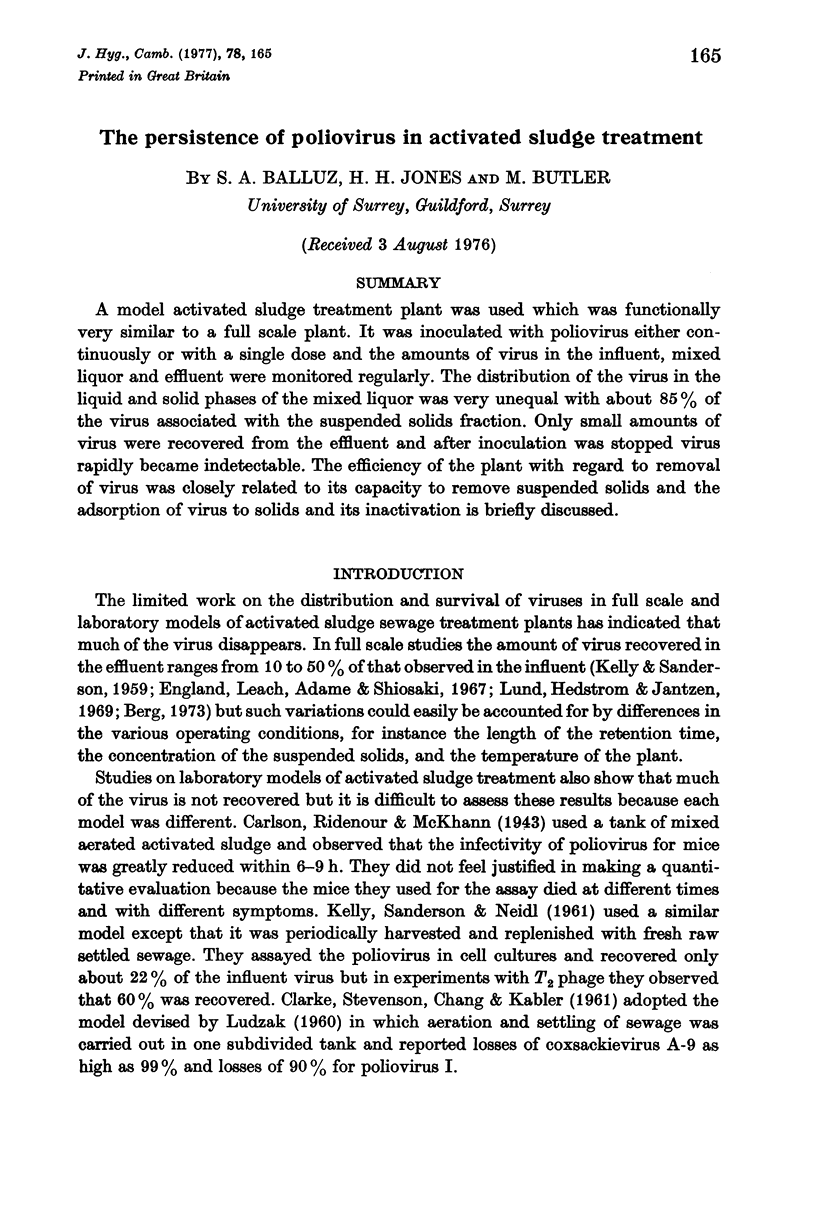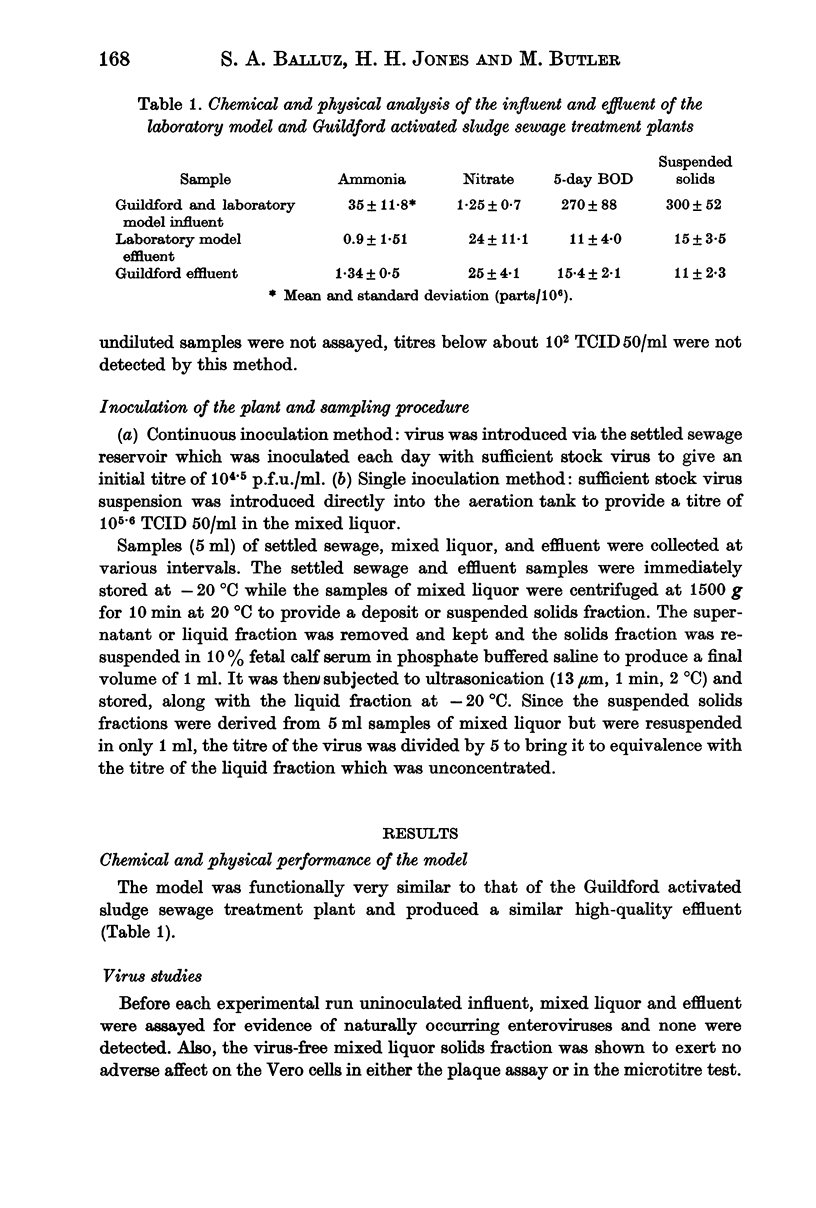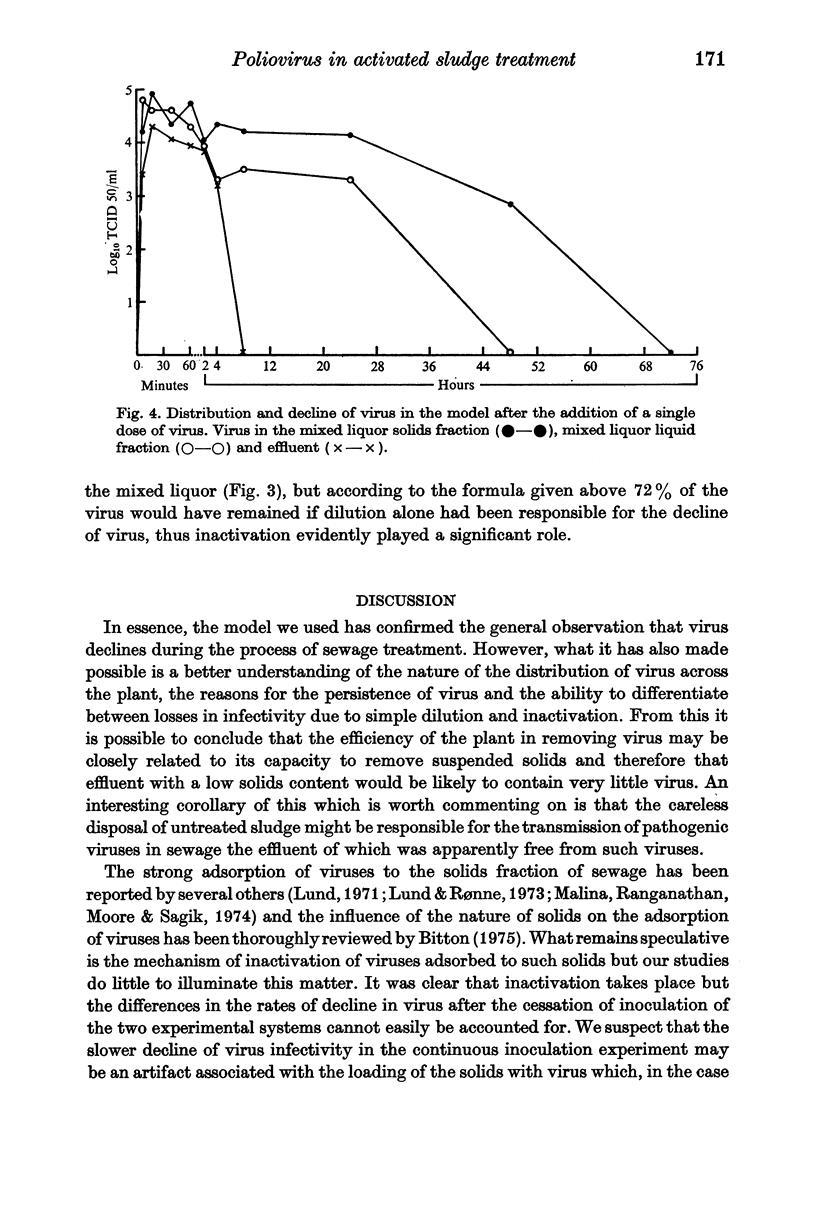Abstract
A model activated sludge treatment plant was used which was functionally very similar to a full scale plant. It was inoculated with poliovirus either continuously or with a single dose and the amounts of virus in the influent, mixed liquor and effluent were monitored regularly. The distribution of the virus in the liquid and solid phases of the mixed liquor was very unequal with about 85% of the virus associated with the suspended solids fraction. Only small amounts of virus were recovered from the effluent and after inoculation was stopped virus rapidly became indetectable. The efficiency of the plant with regard to removal of virus was closely related to its capacity to remove suspended solids and the adsorption of virus to solids and its inactivation is briefly discussed.
Full text
PDF








Selected References
These references are in PubMed. This may not be the complete list of references from this article.
- Berg G. Removal of viruses from sewage, effluents, and waters. I. A review. Bull World Health Organ. 1973;49(5):451–460. [PMC free article] [PubMed] [Google Scholar]
- CLARKE N. A., STEVENSON R. E., CHANG S. L., KABLER P. W. Removal of enteric viruses from sewage by activated sludge treatment. Am J Public Health Nations Health. 1961 Aug;51:1118–1129. doi: 10.2105/ajph.51.8.1118. [DOI] [PMC free article] [PubMed] [Google Scholar]


